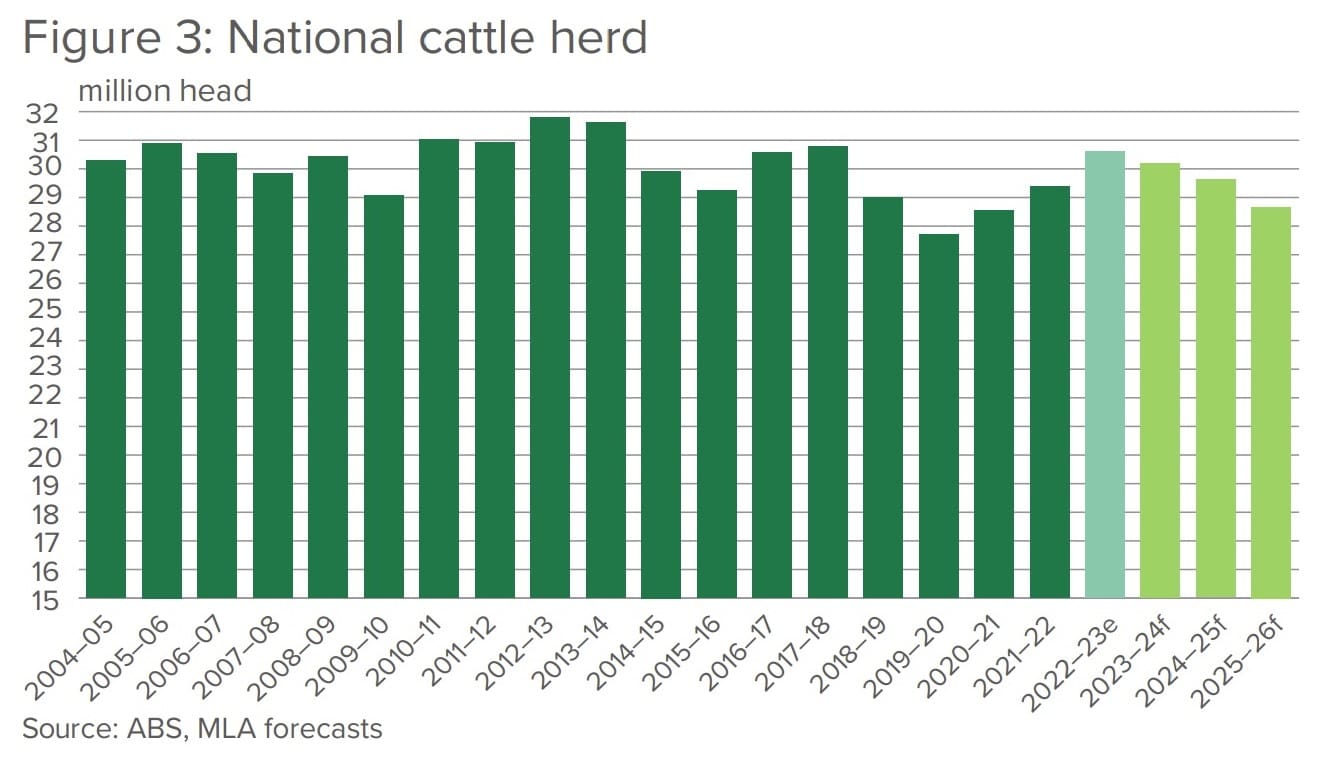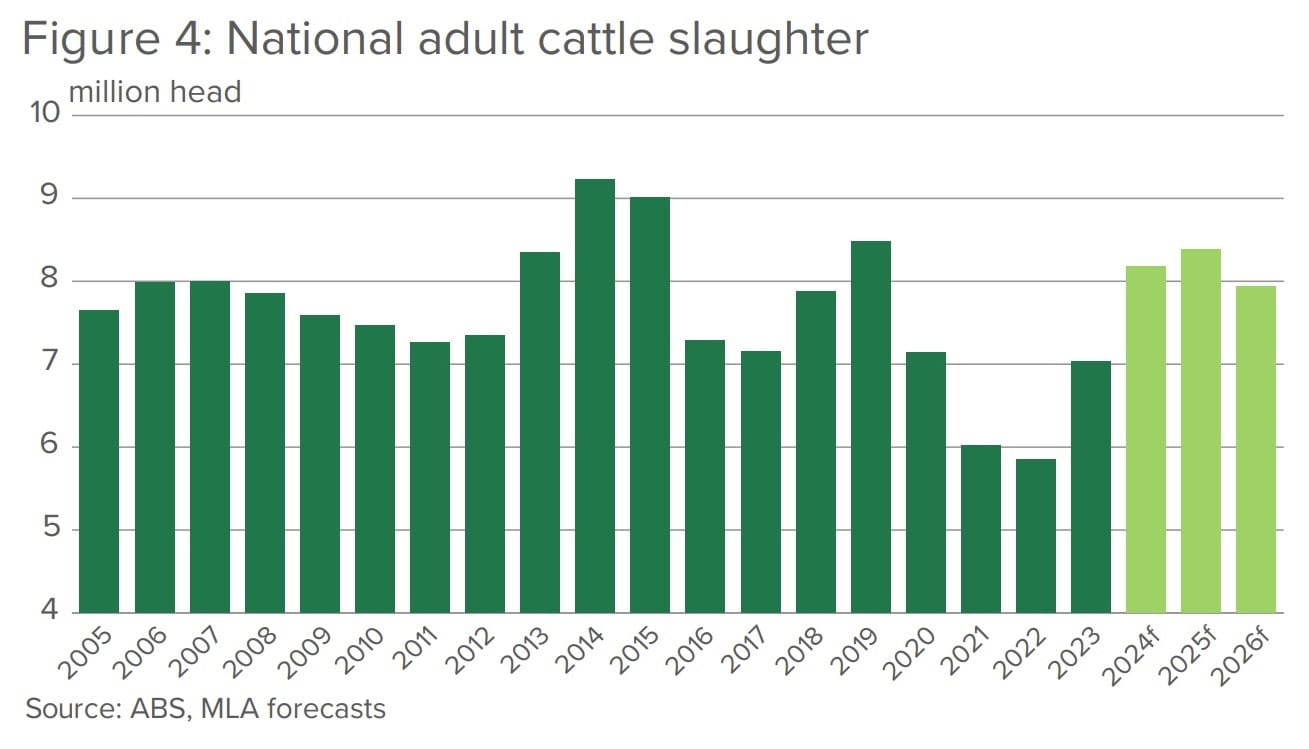THE national cattle herd has reached and passed a cyclical peak after operating at maturity for the past 12 months, while the sheep flock will begin to destock slightly following its peak in 2024, according to Meat & Livestock Australia’s mid-year Cattle Industry Projections update released today.
The update provides a revised outlook on the original 2024 forecast issued back in February, forecasting the national herd and flock, slaughter, production and carcase weights.
MLA’s senior market information analyst Erin Lukey said the 2024 national herd is estimated to have eased 1.4 percent to 30.2 million head, a decline of slightly more than 400,000 head according to the updated Cattle Industry projections.

The northern herd is expected to stabilise in 2024 and 2025 as average wet seasons will continue to support a large, productive breeding herd and increasing numbers of cattle exported into South-East Asia.
Southern Australia will drive the contraction of the herd over the forecast period, as strong overseas beef demand supports higher turn-off in a now-mature herd.
This decline in herd numbers places the herd in a slight destock phase, as noted in the latest statistics from the Australian Bureau of Statistics. The age profile of the herd continues to mature following the herd rebuild of 2020-2023 and strong overseas demand encourages turn-off of processor-ready cattle.

National adult cattle slaughter is forecast to rise by 16pc over 2024 to 8.2 million head, which is the highest figure since the 2019 drought year. Looking forward, slaughter will remain relatively stable in 2025 and 2026 as turn-off continues from a high base, MLA suggests.
Elevated carcase weights will lift beef production in 2024, and push beef production to records in 2025 when production lifts to 2.55 million tonnes. International demand for beef remains strong as overseas supply dynamics create opportunities on the global market.
US beef herd retraction impact
“The United States cattle herd is likely to enter 2025 smaller than it was in 2024, a year which saw the herd at its lowest point in 72 years,” Ms Lukey said.
“Regardless of when the US enters a rebuild phase, its cattle supply will nevertheless remain low as calving rates during the past five years have been below average and cattle availability has already begun to decline.
“The current beef shortage in the US will continue to drive demand for Australian beef globally, both in the US as a direct substitute for domestic product, but also in key north Asian export markets where Australia and the US compete for market share.”
MLA’s industry projections are an important tool for industry and the broader supply chain to understand the direction of the red meat sector over the next couple of years, including macro issues impacting the industry and a deeper understanding of forecast supply, Ms Lukey said.
“Producers, processors, agents, and government have been consulted in the development of these figures, ensuring it is a useful document for all stakeholders in the industry and is an accurate reflection of what is occurring within the industry,” she said.
Click here to access MLA’s mid-year Projections update.

HAVE YOUR SAY